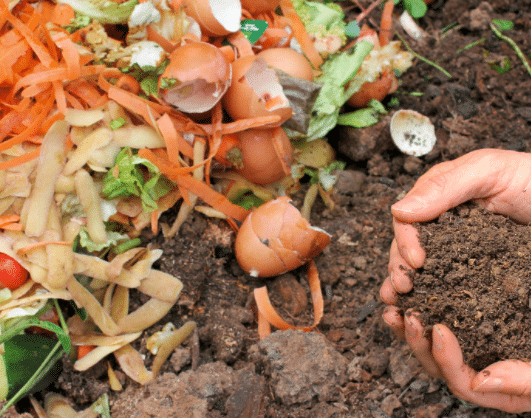Did you know that many fertilizers or chemical companies leave carbon prints, slowly poisoning the Earth in the process? The idea of using fertilizers is to give birth and grow plants and beautiful flower species that make the Earth lively. For some, maintaining a garden in the backyard or the outdoors is a hobby. While for the rest, it is to make the environment lively.
There comes the point where it becomes difficult to maintain the garden and feed the plants, where you are stuck in a dilemma of either letting go of it or find cheaper methods. The latter seems like a reasonable and feasible option. There are various benefits of using home-based food for plants other than drastically reduced expenses. Homemade feeds are responsible for achieving green and lush vegetation, making your garden look like paradise. Keeping the benefits of using homemade feed for your plants in mind to maintain and feed your precious garden, here is a list of homemade methods to produce food for plants efficiently and cost-effectively.
Animal Manure

The century-old formula for increasing soil value is animal manure. Our ancestors recognized this method over a thousand years, and it is yet being used even today. Cow-dungs are typically used as manure, but there are other animal wastes like roosters, turkey, rabbits, and goats. The drawback of using animal manure is that you will need space to raise the animals, which is not a feasible option in today’s generation. If you do have space, then make sure you use the animal waste after six months as manure.
Creating Compost In The Garden

If you have your own space, then it is possible to create compost in your garden. Digging a compost helps manage organic waste effectively and efficiently. If you are looking for a cheap and green way to nourish your plants, digging compost under the soil will help fixate nutrients. The Earth will become rich in nutrients acting as a catalyst that aids in plant growth. For instance, banana peel, when thrown in a pit, will degrade quickly. The degraded banana peel is a rich source of potassium, which the soil absorbs. Most of the flowering plants demand potassium, and creating this compost just below the planted flower will ensure that the plant meets its needs. Other organic residual, like leftover vegetables, will help fixate nitrogen in the soil.
Epsom Salt: Fairy Dust For Gardens

Epsom salts is a garden ingredient kept secret for centuries. Ancient gardeners benefitted from the use of Epsom salt. The chemical name of Epsom salt is magnesium sulfate. Thus, the chemical framework comprises magnesium, sulfur, and oxygen. The magnesium content in the salt is the main element responsible for increasing plants’ efficiency to take in nutrients. Nutrients like phosphorus and nitrogen are responsible for plants’ growth, and increasing their intake with magnesium infers faster plant growth.
Furthermore, Epsom salt triggers plant production for chlorophyll, responsible for photosynthesis, aiding plants to make their food. More food production implicates a faster growth rate. Another benefit of using Epsom salt is that it keeps your plants free from fungal diseases, thereby responsible for their growth and well-being. The cost of Epsom salt is less than five dollars and is readily available in the market.
Seaweed: A Blanket Of Water Retention

Primarily people use seaweed as a mulch in arid and dry regions where the soil was prone to drying in these weather conditions. Seaweeds are available on the shores as a washed-out material from the sea. A quick trip to the beach, and you will be able to collect enough seaweed to help your soil, thereby creating a nurturing environment for your plants. Another benefit of using seaweeds is that it acts as a slug repellant as slugs do not like euhedral faces or edged faces. Furthermore, the salt content in the seaweeds plays a factor in keeping the slugs in check. Apart from all this, seaweed has tons of hormones and nutrients that are responsible for plant growth.
Seaweed is a carbohydrate bank that the plants like to cash on to grow faster. Providing seaweed to the plants is like spoon-feeding because plants do not have to go through the process of breaking down macronutrients since seaweeds are packed with micro-nutrients and blow in cellulose. The post-effective way of using seaweed is in the form of seaweed tea. You can make the seaweed tea by soaking it in water, which absorbs all its nutrients in a week. After the water contains the seaweed’s nutrients, you will be able to pour the water into the soil. In this way, the ground directly soaks up the nutrients, which the plants absorb through their roots.
Water From Your Aquarium

Who would use the dirty, cloudy, and stinky aquarium water? You might not like it, but the plants definitely do. Instead of discarding your aquarium water in the commode, you can pour it into the garden area. Keep in mind that the cloudy appearance of the water is a result of fish waste. Organic waste is the critical component to fixate nitrogen in soil due to its ammonia content.
Furthermore, the aquarium water also has valuable nutrients from the food given to the fish. Thus, using aquarium water will aid the growth of plants. Although this option is available for those who have a small aquarium at home, it is the easiest and the most feasible option, provided your plant is suited to it.
Conclusion:
It becomes crystal clear that despite eliminating harmful fertilizers, there are various sources of nutrients for plants readily available at home or supplements that cost a couple of dollars. Therefore, chemical fertilizers will not limit your passion for gardening. There are so many ways you can create homemade plant food. Your plants will be thriving in no time with these ideas.


